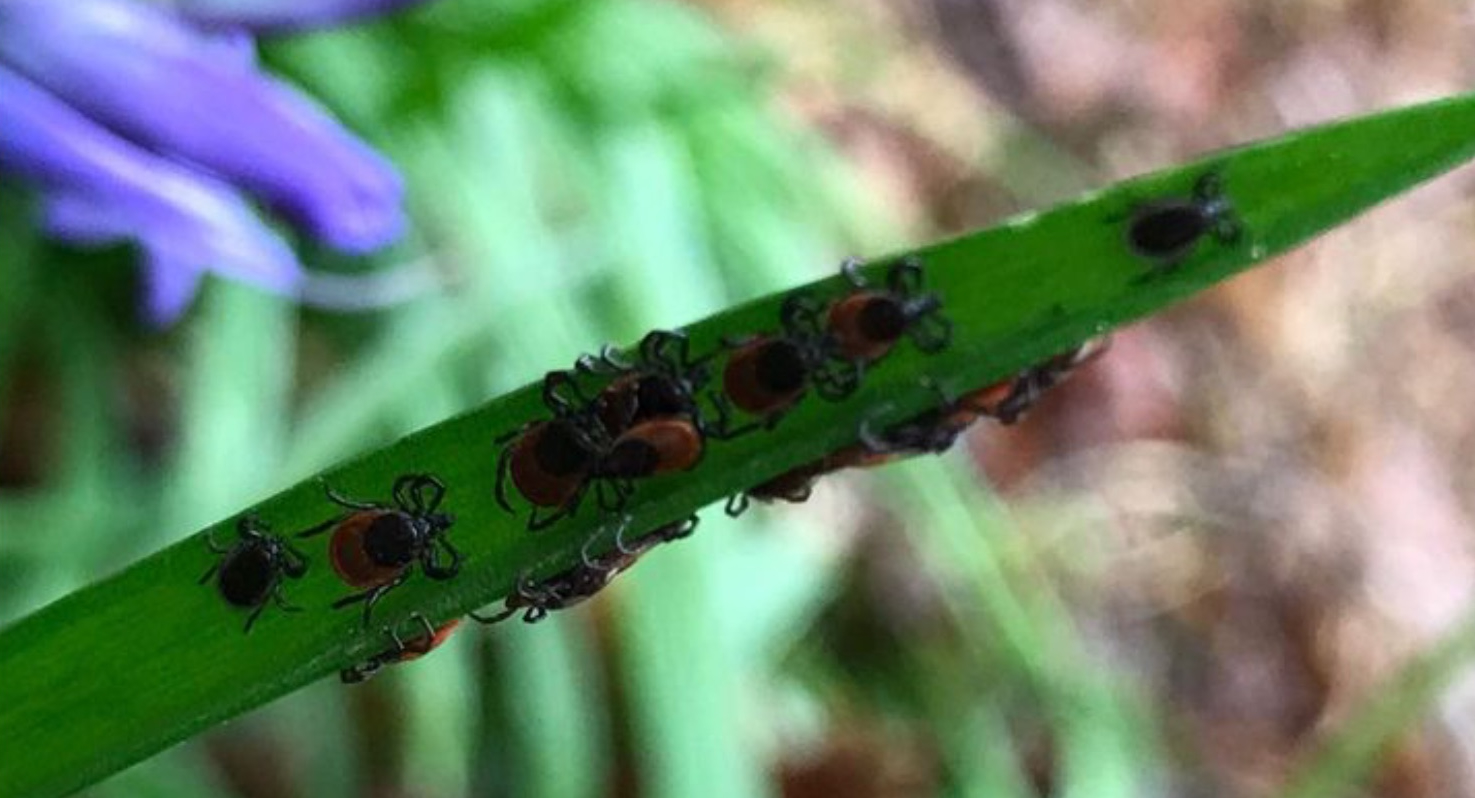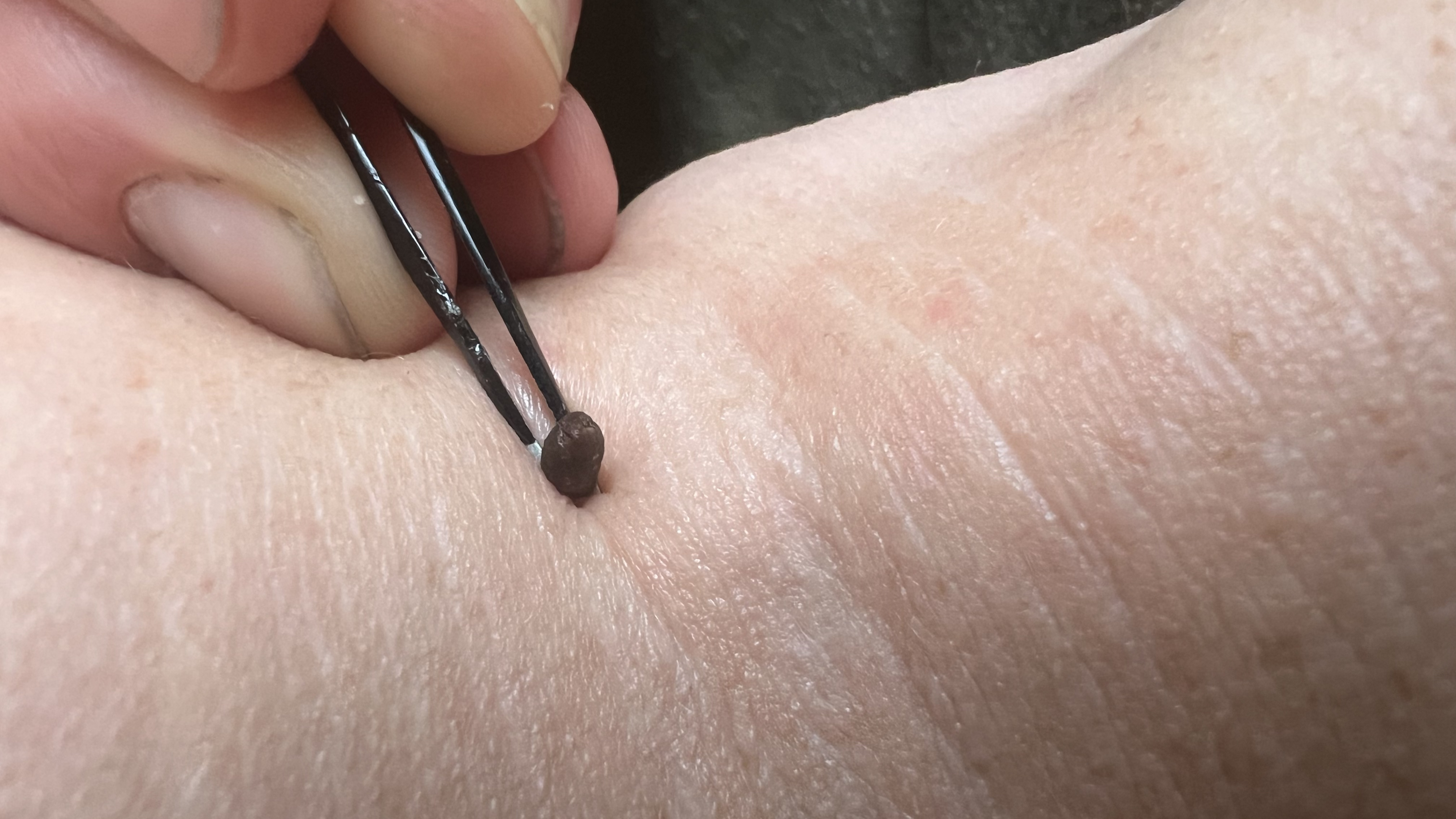How to defend against ticks while mountain biking and what to do if you find a tick on your body
Riding down the woods with your mates is ace, but it's time to start watching out for vampire hitchhikers and the infections they can carry says Guy Kesteven in this week's Bespoken Word column

It’s been a pretty miserable winter for riding, but a brilliant one for some particular woodland dwellers who love to hitch a ride on passing bikers or anything else for that matter. Yes folks, it’s tick season again and it’s likely to be a really bad one. So why does that matter and what should you do to keep yourself safe?
Bugs with bugs
If you’ve not met a tick before it’s basically a tiny brown/black beetle-looking thing about 2-5mm long. Get close and you’ll see it’s got a pointy head, external mouth parts and a rubbery bladder-like body. It hangs out with its pals on woodland leaves and long grass waiting for an animal to go past and then jumps [or 'quests' as it's somewhat perversely and officially called – Ed] aboard.
Sometimes it’ll stick its face into the first bit of exposed flesh it finds, but it’ll often crawl around looking for the warmest, darkest, best-hidden bits where it can plug in and feast undisturbed. And what it loves to fill that stretchy bladder with is blood and it’ll keep plugged in until it’s almost ready to pop. Then it’ll detach and fall back into the undergrowth to digest its meal before jumping onto the next blood-rich buffet that wanders past.
This sounds grim enough, but the big danger with ticks is that some of them (1 to 10 percent depending on area and season) can carry Lyme’s disease. This is a bacterial infection that can cause a spreading ‘bullseye’ rash, flu-like symptoms such as headaches and joint pain, or even stroke-like symptoms such as facial paralysis, loss of balance and feeling in hands and feet. Lyme’s disease can generally be treated successfully and swiftly with powerful antibiotics, but severe infections can leave you unwell for months with life-altering aftermaths in some rare cases. While it’s still very rare in the UK, the number of ticks carrying TBE – Tick Borne Encephalitis – is increasing significantly too and TBE is a much more serious and consequential infection.
The number of ticks in the UK, Europe and North America is increasing dramatically as a result of wetter, milder winters creating conditions that ticks thrive in. An increase in deer numbers and reduced sheep dipping by farmers could also be causal factors.

The tick list
So how can you stop ticks getting stuck into your skin in the first place and what should you do if you find one already getting its vampire on?
Physical protection is your best bet, so if you know you’ll be riding through woods and grassland – particularly if you’re sharing it with sheep and/or deer – then MTB pants and long sleeve jerseys are a smart idea. If you’re flashing the flesh, then coat yourself in insect repellent, re-applying regularly on long rides or if you’re likely to have wiped it off in wet undergrowth. Avoid sitting in grass or wandering off into thick undergrowth when you stop, and try and stay clear of long grass if you're bikepacking. Check yourself and your pals regularly when riding too, if you can spot a tick and brush it off before it gets stuck in that’s an obvious win. Check yourself very thoroughly when you’re getting showered/changed after a ride, paying particular attention to backs of knees, elbow cracks, armpits and your nethers for any uninvited guests.

If you find a tick, DO NOT try and pull it off. Squeezing its body will potentially inject dirty blood and bacteria back into your bloodstream. There’s a high chance the mouth parts will snap off too, increasing the infection risk. Don’t and burn it off or ‘drown it’ with vaseline either as that can make it vomit blood and bacteria back into you too. Instead, get a tick remover – there are all sorts of designs available from outdoor or pet stores – and very carefully use it to lever the pointy tick bits out of your skin. Once it’s out, make sure you despatch it promptly so it can’t escape to suck another day – sorry ticks.
If you’ve been bitten, keep a very close eye on the bite site. If you see a red rash forming – particularly a circular ring – that’s a possible sign of infection. Draw a line around the outer edge of the rash with a semi-permanent pen and keep checking to see if it spreads beyond that perimeter. If it does, or you start suffering any of the symptoms mentioned above, get yourself to a doctor, and be sure to mention you’ve had a tick bite. Keep vigilant for up to six weeks afterwards as Lyme’s disease can sometimes be a real slow developer.
Don’t forget to check dogs or other pets that go roaming about through grass either, as they can get infections from ticks or pass the ticks onto you in the discomfort of your own home.

Guy Kesteven has been working on Bike Perfect since its launch in 2019. He started writing and testing for bike mags in 1996. Since then he’s written several million words about several thousand test bikes and a ridiculous amount of riding gear. He’s also penned a handful of bike-related books and he reviews MTBs over on YouTube.
Current rides: Cervelo ZFS-5, Specialized Chisel, custom Nicolai enduro tandem, Landescape/Swallow custom gravel tandem
Height: 180cm
Weight: 69kg
